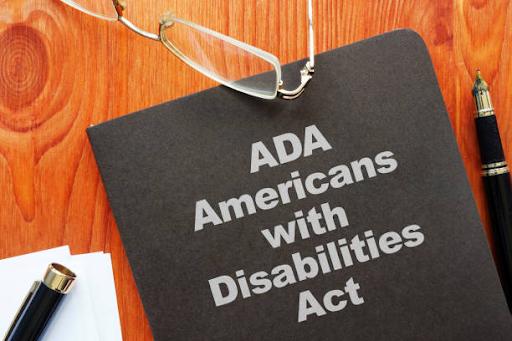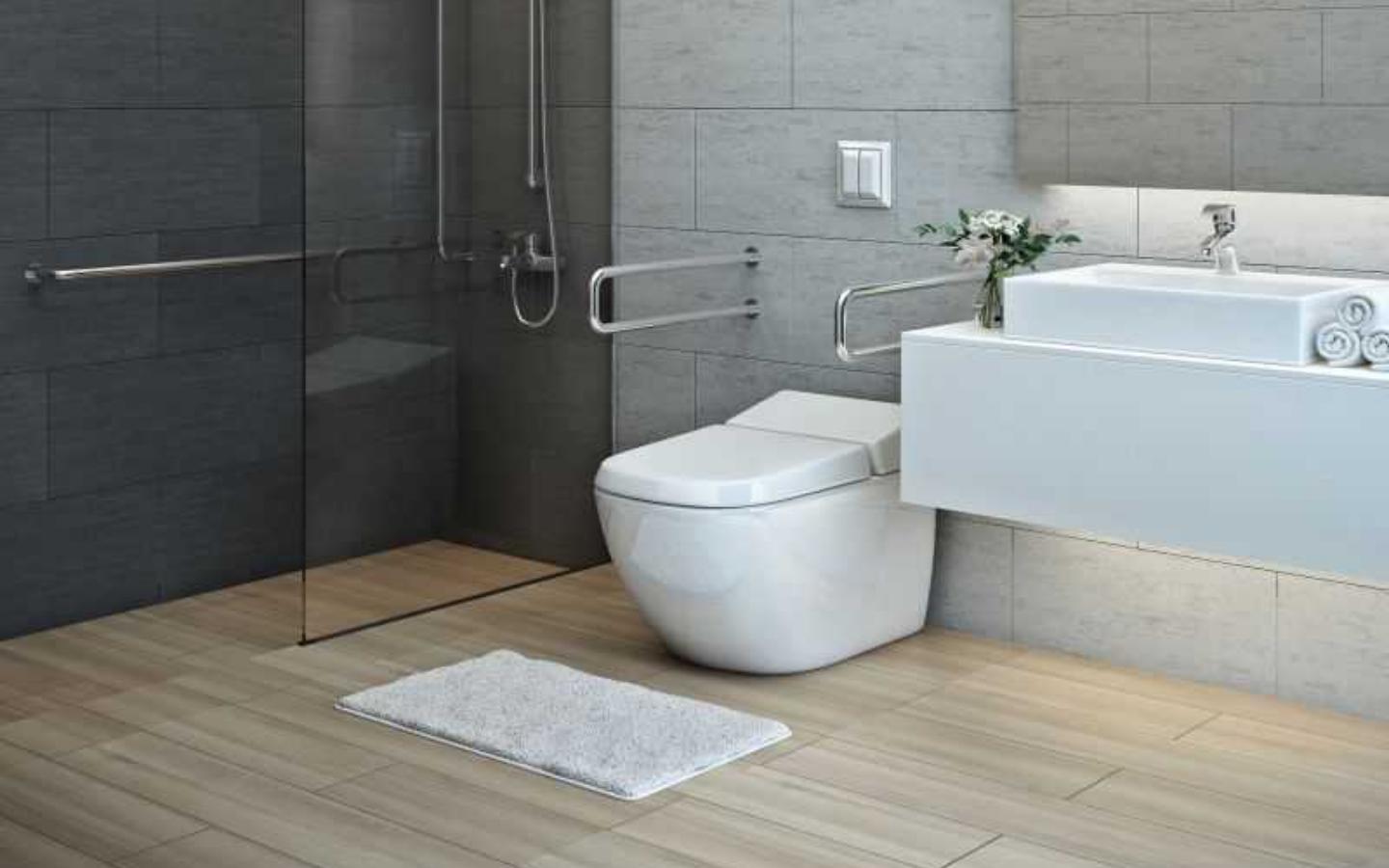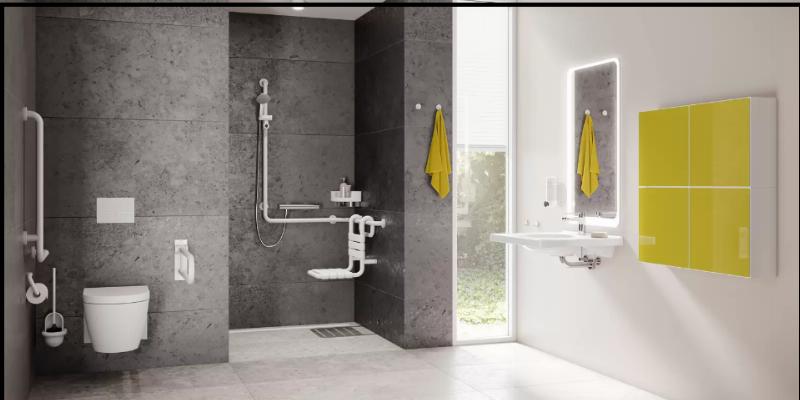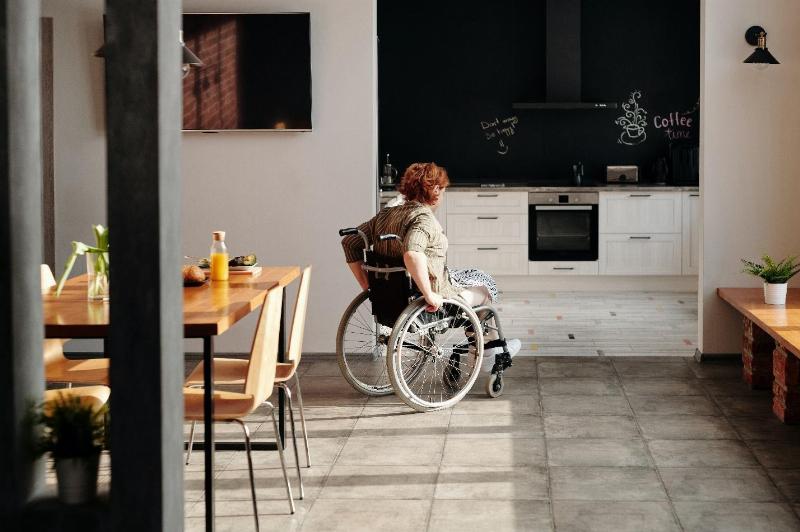Does ADA Apply to Commercial Remodel?
If you wish to change your building, study the Americans with Disabilities Act (ADA).
The ADA guarantees disabled people an accessible built environment. Existing buildings must be ADA-compliant. This ensures that everyone, regardless of ability, may use them. (Burleson Construction 2021)
The ADA Standards ensure that legally required facilities are accessible to all.
These criteria can be enforced in public spaces, commercial buildings, and government buildings.
First-time violations of ADA building compliance standards can cost $55,000 to $75,000. Second-time violations can cost $110,000 to $150,000.
Not obeying the guidelines might cause liability difficulties and costly court challenges.
More than 6,500 ADA lawsuits were filed against non-disability-friendly businesses in 2016.
Complying with the ADA in commercial buildings
The Houston Wyndham Hotel’s main entrance was renovated to meet ADA standards.
Most new commercial buildings are ADA-compliant, so lawsuits are rare.
Applying the ADA to existing buildings is trickier.
Some building owners and managers believe buildings built before 1992 are exempt.
Regardless of age, companies must follow ADA standards when changing a primary function.
The ADA defines “alternation” as
- Remodeling
- Renovating
- Rehabilitating
- Reconstruction
- Changing
- Rearranging structural components or elements, as well as wall and full-height partition plan configuration. Making other changes that affect facility usability.
Building codes are specific and are considered minimum standards. However, the ADA is vague, and judges decide how to meet the requirements in each case.
There is a lot of room for judges to figure out what the law means.
Pro tip takeaway: A building owner or manager should consult a lawyer about specific issues.
Follow best practices for your commercial building and remodeling projects.
In this article, we’ll look at what you need to do to make sure your commercial buildings are up to code. We’ll also give you an ADA checklist for existing facilities.
How the ADA affects commercial buildings
Disabled people are more likely in high-traffic commercial buildings. You should make sure your business fulfills ADA regulations.
When planning your update, you may encounter these ADA standards for commercial buildings:
- Putting hardware on doors that is easy to use
- Putting in new toilets in public and private places (see below)
- Easy-to-find parking
- Getting wheelchairs through doors requires making door frames wider.
- Changing water fountains so that everyone, even people in wheelchairs, can use them.
- Getting rid of bad floors that make it hard to move around
- Railings or grab bars put in the right places
- ADA ramps or curb cuts at entrances and exits (up to 60% must comply).
- rearranging furniture, fixtures, and other things to make service easier.
The ADA has a thorough list of all the guidelines that commercial buildings must follow.
ADA requirements for buildings that already exist
Retrofitting an old building for ADA requirements can be time-consuming. It needs proper adherence to standards.
ADA’s Public Accommodations and Commercial Facilities explain concerns with pre-1990 buildings (Title III).
Title III requires existing buildings to remove architectural barriers unless it’s not “practical”. Other modifications can’t be made.
Title III defines “feasible” as “simple to perform without much bother or expense.”
Some things to think about when deciding whether or not barrier removal is easy to do are:
- How much will it cost to take down the barriers?
- How much money does the facility or facilities involved have?
- How many people work at the facility?
- How does it affect the cost and resources of the building?
- Effect on the way the facility works.
- The covered entity’s finances as a whole
- How many people work for the covered entity?
- How many, what kind of, and where are its facilities?
- The type of business the covered entity runs, as well as the makeup, structure, and duties of its employees,
- How close facilities are to the covered entity in location, management, or money.
Other steps may include widening doorways, fixing bathrooms, or adding ramps.
Changes like these are needed when they can be made without being too hard or expensive.
As a general rule, if there are any barriers, they should take up to 20% of the cost of building.
If the cost is more than 20% of the cost of building, it may be called a “disproportionate cost.”
Say a building’s elevator doesn’t meet ADA clearance requirements.
But the elevator is big enough for a wheelchair user and another person to both fit in it.
The load-bearing walls around the elevator are hard to change, so replacing it could cost $90,000-$120,000.
Due to how much it would cost to replace the elevator, this would not be an easy solution to find.
And since a wheelchair can still get on the elevator, it probably doesn’t need to be replaced right now.
Some changes don’t trigger the ADA upgrade clause unless they change how a building can be used.
Maintenance repair projects include
- HVAC (heating, ventilation, and air conditioning),
- re-roofing
- Electrical work that doesn’t involve placing switches
- Outlets,
- Cosmetic work, like painting,
- Equipment that isn’t part of the building’s architecture. e.g., computer terminals or office equipment.
A key part of a hotel renovation is the minimum number of guest rooms that need to be accessible.
It is based on how many rooms are being fixed up or added, not how many rooms are in a hotel.
Accessible rooms must offer the same number of room types, beds, and amenities as other rooms.
Accessible guest rooms come in two types:
- Equipped with mobility features
- With communication capabilities
How critical it is to follow ADA guidelines
The ADA (Americans with Disabilities Act) makes public and commercial buildings accessible to everybody.
Businesses must satisfy basic accessibility standards by law.
The ADA helps people with sight, hearing, mobility, and other disabilities live in public.
When ADA-compliant renovations need to be done,
Retrofitting a building that was built before 1990 presents its own set of problems.
Accessibility barriers must be taken down when it doesn’t take too much extra time or money to do so.
The rule of thumb in the business world is to spend no more than 20% of your budget on compliance issues. (ADA National Network 2021)
Even unrelated business improvements may necessitate ADA-compliant changes in another area.
If your main goal is to update your reception area, it might not make much sense to worry about your bathrooms.
But if you don’t meet ADA standards, it will hurt your business in the long run.
How to Get to Common Areas
If you wish to remodel your business office, you may need to fulfill ADA standards. The ADA affects most bathrooms, lobbies, exits, and entrances (ADA).
Cafeterias, auditoriums, and dressing rooms have special rules.
At ada.gov, you can find a full checklist for following the ADA.
This government list explains business owners’ legal responsibilities.
It might be hard to figure out how to meet all of these requirements.
Smart Remodeling LLC has a lot of knowledge and experience with ADA projects. We can give advice and feedback on a wide range of scenarios and come up with ideas to cut down on code violations or delays.
ADA compliance in business is not a one-size-fits-all solution.
It can be hard to figure out how the ADA will affect your renovation project.
There are many different ways for businesses to meet the needs of their customers.
Concert halls and grocery stores must meet accessibility regulations but in different ways.
Smart Remodeling LLC has renovated many buildings for various entities.
From schools to hotels, hospitals to historical buildings. We can help your project move forward while saving you money.
Disabled people live independently and are active community members.
By 2030, 71 million baby boomers will be over 65 and will desire products, services, and settings.
Once disabled people find a place that works for them, they return again and again.
So, a commercial building owner who doesn’t follow Title III can lose thousands of clients.
The following are the exceptions:
Accessible rooms must offer the same number of room types, beds, and amenities as other rooms.
Changes to windows, doors, hardware, operating controls, electrical outlets, and signs are exempt.
This rule doesn’t apply to mechanical, electrical, fire protection, or hazardous material adjustments.
This rule doesn’t apply to alterations made to make a facility accessible.
This rule doesn’t apply to areas where only Type B units have been changed.
Are You Ready To Remodel your building according TO ADA Requirements?
Your business needs a general contractor to simplify projects. Work with a commercial builder who has the experience and can add ADA upgrades to your plans. Our experts can assist you in determining what has to be done and how much it will cost. If certain problems should be addressed now or later, (if needed). You can reach us by calling 832-808-8889 or sending an email to sales@smartremodelingllc.com.









